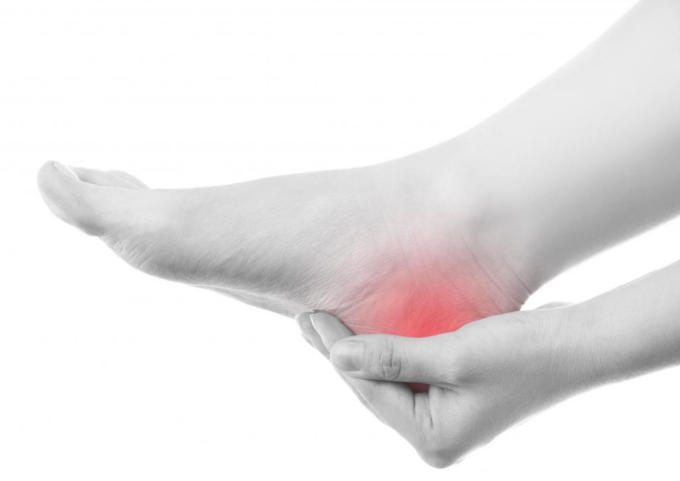
by Tanya Keam | Nov 1, 2019 | Acupuncture, Chinese medicine, Client information, Exercise, Health practitioner, Heel pain, Joint pain, Muscle pain, Nambour, Pain, Plantar Fasciitis, Sunshine coast
Acupuncture for Plantar Fasciitis
Imagine crawling out of bed, half asleep and feeling the pain of standing on a nail or a hot amber right in your heel. You crumble, knees buckle, jaw clenched in pain … this is Plantar Fasciitis! Acupuncture for Plantar Fasciitis.
What is Plantar Fasciitis?
The plantar fascia is a piece of strong and thick tissue that runs along the bottom of the foot. It connects the heel bone to the toes, creating the foot’s arch. Plantar fasciitis is inflammation of the plantar fascia.
It can be caused by:
- Playing certain sports that put stress on the heel bone or recent increased activity
- Flat-footed, high arches or collapsing arches
- Being overweight
- Pregnancy
- Muscle tension in the legs
- Standing for long periods
- Standing on hard surfaces
- Heel spur
- Injury
- Wearing incorrect shoes
- Misalignment of the pelvis or hips
Based on an Australian local population study of 3206 participants, the prevalence of heel pain was 3.6% (1).
What are the symptoms of Plantar Fasciitis?
Pain! Which tends to be aggravated by:
- Long periods of standing or sitting
- When you first step out of bed in the morning and place your feet on the ground
- After increased physical activity in the lower half the body
How do you know if you could be experiencing Plantar Fasciitis?
Because pain is the main debilitating symptom, in most cases diagnosis is by the presenting symptoms and location of pain in the heel. The achilles tendon is also examined for inflammation. Further investigations such as ultrasound or X-ray may be used to rule out other conditions.
How is Plantar Fasciitis treated?
- Pain relief medications
- Steriod injections into the heel
- Activity adjustments or rest
- Appropriate stretching
- Acupuncture therapy
- Massage therapy
- Sole inserts for shoes
- Change in footwear or padding when standing for long periods
- Rest
- Nutritional adjustments
The most effective treatment plan for Plantar Fasciitis is to first remove the cause, then apply stretching and treatment which results in resolving inflammation and pain.
Chinese medicine views of Plantar Fasciitis
Predominantly with the view that there is a stagnation in the flow of Blood and Qi in the affected are, this may also be accompanied by heat in the local area (inflammation). For this condition, a combination of Chinese Medicine practices may be used.
How can Chinese medicine help?
Firstly, figure out the cause, then apply the correct treatment.
Structural alignment of the body – Assessing whether your pelvis/hips or spine is out of alignment determines whether your feet are hitting the ground correctly.
Diet – Modern understanding of gut health has shown poor gut function can significantly increase inflammation in the body. Looking into your nutrition and your eating habits may assist overall health and therefore provide pain relief for issues such as Plantar Fasciitis and also prevent inflammation.
Nutritional supplementation – Foods and herbs can be useful for reducing inflammation. Such as Omega’s, Tumeric and Magnesium.
Acupuncture – Trials have showed potential positive effects in the treatment for Plantar Fasciitis. Acupuncture can be effective at reducing muscle tension and as such can help to reduce the pressure and strain on the fascia in Plantar Fasciitis. Electro-acupuncture coupled with conventional treatments (stretching exercises, shoe modification and analgesics) provided a success rate of 80% in chronic Planar Fasciitis which was more effective than conventional treatments alone (2). Future research should recognise the complexity of plantar heel pain, of acupuncture and of the relationship between them, to explore the optimum use and integration of this approach (3).
Other techniques – massage, cupping, gua sha, liniments to accompany acupuncture.
Lifestyle recommendations – Adjustment of posture, specified stretches, appropriate footwear and prevention about contributing factors that may be aggravating the condition.
If you are suffering from plantar fasciitis or believe you may have something similar such as burning heel pain please contact us today to discuss how we can help you at our Sunshine Coast Acupuncture clinic with your plantar fasciitis or other pain conditions.
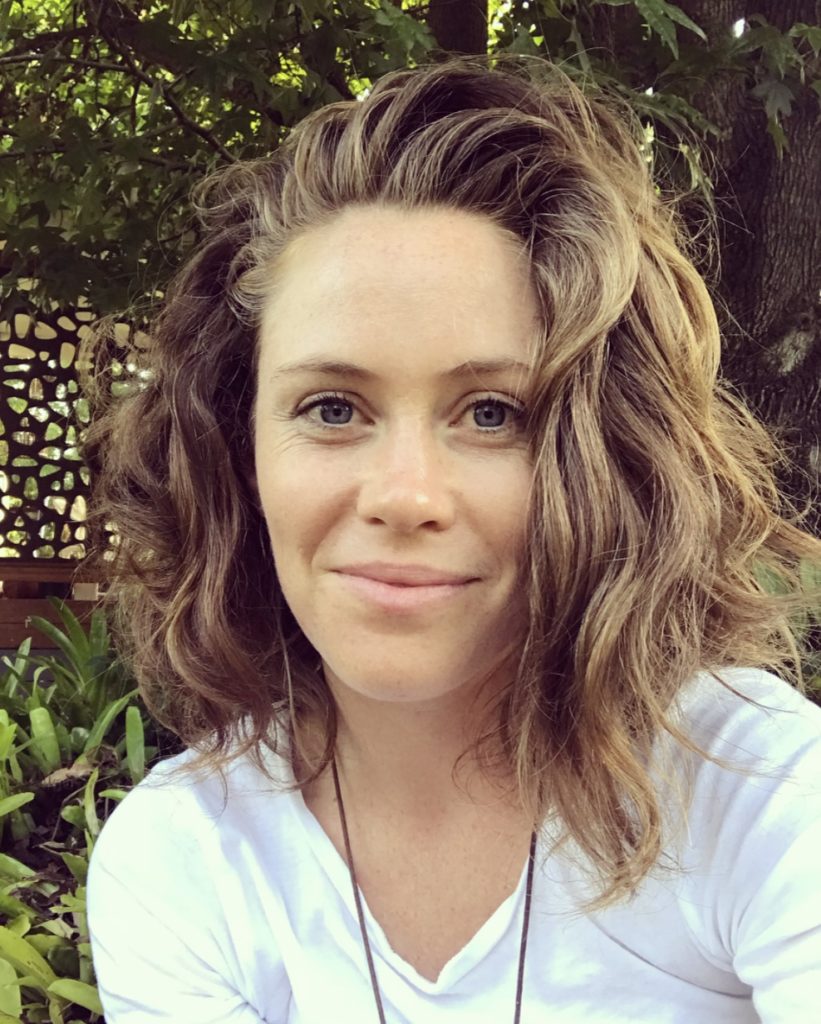 Hi, I’m Tanya, an Acupuncturist and health practitioner in Nambour on the Sunshine Coast, Queensland Australia. I practice Chinese medicine because its safe, logical, relevant and has effectively shown methods of natural wellness for thousands of years (read more about my training here). Life doesn’t need to be complicated and nor does the treatment approaches to get people feeling vibrant and well. I’ve seen people gain a lot from treatments, much more than just alleviating symptoms. It’s exciting to connect with people and share deep wisdom from the classics of ancient and traditional medicine, with modern protocols for todays mind-body living. See you in the clinic !
Hi, I’m Tanya, an Acupuncturist and health practitioner in Nambour on the Sunshine Coast, Queensland Australia. I practice Chinese medicine because its safe, logical, relevant and has effectively shown methods of natural wellness for thousands of years (read more about my training here). Life doesn’t need to be complicated and nor does the treatment approaches to get people feeling vibrant and well. I’ve seen people gain a lot from treatments, much more than just alleviating symptoms. It’s exciting to connect with people and share deep wisdom from the classics of ancient and traditional medicine, with modern protocols for todays mind-body living. See you in the clinic !
References:
- Source- Allan J Pollack, Helena Britt (2015) Plantar fasciitis in Australian general practice Volume 44, No.3, 2015 Pages 90-91, Retrieved from https://www.racgp.org.au/afp/2015/march/plantar-fasciitis-in-australian-general-practice/
- The American Journal of Chinese Medicine, An International Journal of Comparative Medicine East and West. Efficacy of Electro-Acupuncture in Chronic Plantar Fasciitis: A Randomized Controlled Trial. Wipoo Kumnerddee and Nitsara Pattapong. Issue 06, Volume 40, 2012. Retrieved from https://www.worldscientific.com/doi/abs/10.1142/S0192415X12500863
- Clark Richard J, Tighes Maria, The Effectiveness of Acupuncture for Plantar Heel Pain: a systematic review. Acupuncture in Medicine. October 2012. Retrieved from https://journals.sagepub.com/doi/abs/10.1136/acupmed-2012-010183https://journals.sagepub.com/doi/abs/10.1136/acupmed-2012-010183

by Tanya Keam | Aug 5, 2019 | Acupuncture, Chinese medicine, Client information, Emotions, Health practitioner, Herbal remedies, Mental health, Nambour, Rehabilitation, Spiritual growth, Sunshine coast, Wellness
I’ve been having conversations with new and long term Sunshine Coast patients recently about what makes them decide to go see a certain health practitioner over another.
What’s the stats?
- 80% say they’ll ask a friend if they know of someone because they trust that person has had a positive experience
- 10% do a quick google search for who is local and available NOW
- The other 10% just plod on and try to figure it out and hope it all gets better. (I’m sure we’ve all been in each percentage for different things at different times).
Last week a semi-new patient returned for a monthly appointment. She was telling me about her 2 colleagues at work who also suffered migraines (which was this patients main complaint that’s now been resolved from treatment). One of the colleagues was just at her wits end with constant migraines, not knowing where to turn that she is now taking stress leave from work. Hallelujah for proper rest! However, please, if you have good results with any local Sunshine Coast health businesses in all fields – TELL YOUR FRIENDS AND HELP THEM OUT!
My top tips for choosing the right health practitioner
- Someone close to you goes to them and has had a positive experience.
- The practitioners appointment availability fits your schedule (there’s no point trying to see an ‘amazing practitioner’ referral who isn’t available on a specific day that you need/prefer.
- The practitioner is honest about whether they can help you, is willing to research how they can help you or can find you the right referral if they can’t help you.
- What are your needs that need to be met? Are you looking for a quick fix or someone to guide to you wellness with the treatment that suits you as an individual and also teaches you lifestyle adjustments for preventative health.
- The practitioner is qualified and experienced in their field, holds current insurances and certificates for their modality and does continuing education each year.
- The practitioner explains the treatment clearly to you (if it’s new to you), how it works, how long your condition may take to resolve and even reactions that can occur as your body tries to heal and adjust.
- You have a friendly connection and can hold a good conversation with your practitioner – this may happen down the track but it is important to connect.
- For eg. You may see an Acupuncturist to help manage anxiety (there is good scientific evidence encouraging acupuncture therapy to treat anxiety disorders as it yields effective outcomes, with fewer side effects than conventional treatment). However, you are needing psychology/counselling support to talk to someone in a therapeutic way. It is the practitioners duty of care to practice within their scope of practice and find someone who can assist in that area of your health.
- Ask your other health related modalities if they know of someone – your pilates teacher may know a good counsellor, your naturopath may know a good GP. *Not only should health practitioners take care of themselves, but they invest time and energy to source local health referrals to connect with.
If you’re unsure about going to someone new :
- Research
- Know what they specialise in
- Their experience
- Training and credentials
- Appointment availability.
- Most importantly, call them and talk to them or ask if you can meet them in person prior to making an appointment.
We need to make some failures before we find the right fit sometimes. Don’t sweat it if a ‘great referral’ doesn’t feel right you for – just find someone else. Persist! Your health is your life.
Your local community are there to support you so ask your friends and colleagues for recommendations. If you’re unsure about continuing care with a practitioner, communicate with them about what is and isn’t working. They should be able to change the treatment approach, make some suggestions and respect what you want to do.
Newcomers to Chinese Medicine and Acupuncture have A LOT of questions – feel free to share this info here.
For more information about how I can help with your health, you can contact me
or you can now book online
 Hi, I’m Tanya, an Acupuncturist and health practitioner in Nambour on the Sunshine Coast, Queensland Australia. I practice Chinese medicine because its safe, logical, relevant and has effectively shown methods of natural wellness for thousands of years (read more about my training here). Life doesn’t need to be complicated and nor does the treatment approaches to get people feeling vibrant and well. I’ve seen people gain a lot from treatments, much more than just alleviating symptoms. It’s exciting to connect with people and share deep wisdom from the classics of ancient and traditional medicine, with modern protocols for todays mind-body living. See you in the clinic !
Hi, I’m Tanya, an Acupuncturist and health practitioner in Nambour on the Sunshine Coast, Queensland Australia. I practice Chinese medicine because its safe, logical, relevant and has effectively shown methods of natural wellness for thousands of years (read more about my training here). Life doesn’t need to be complicated and nor does the treatment approaches to get people feeling vibrant and well. I’ve seen people gain a lot from treatments, much more than just alleviating symptoms. It’s exciting to connect with people and share deep wisdom from the classics of ancient and traditional medicine, with modern protocols for todays mind-body living. See you in the clinic !
Research:
Amorim D, Amado J, Brito I, Fiuza SM, Amorim N, Costeira C, Machado J. Acupuncture and electroacupuncture for anxiety disorders: A systematic review of the clinical research, Complementary Therapies in Clinical Practice, 2018 May;31:31-37.
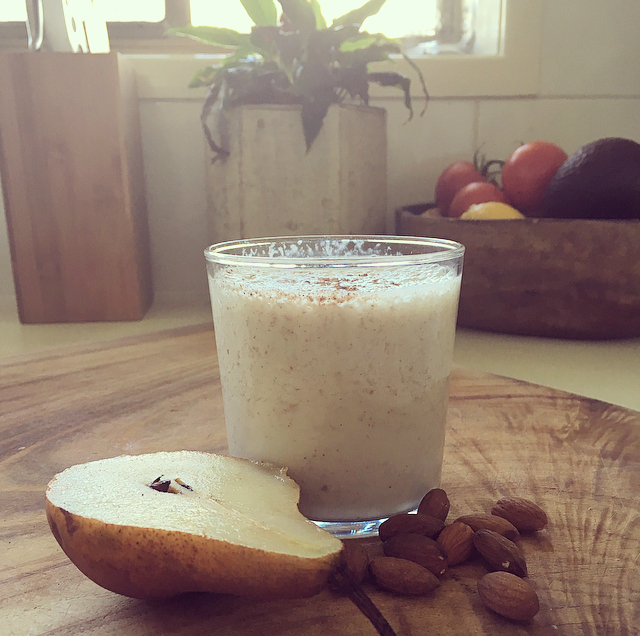
by Tanya Keam | Jun 11, 2018 | Acupuncture, Chinese medicine, Client information, Cough, Dairy alternatives, Dairy free, DIY Wellness Tips, Food, Herbal remedies, Homemade, Immune Support, Immune system, Nambour, Nutrition, Recipes, Seasonal living, Smoothie, Sunshine coast, Vegan, Vegetarian, Wellness, Winter
A simple Chinese Medicine cough recipe
Chinese medicine is seasonal medicine – what better way to take care of yourself than a cough recipe to look after you this season. In Winter it is recommended to consume less cold and raw food as it harsh on our digestive system to process, which is a balmy 36.5 degrees inside. Putting something the temperature of the fridge in a nice warm coldren stomach, first takes energy to warm it before it can digest it. This can lead to fatigue, bloating, and loose bowel movements.
In late Autumn and Winter we opt for:
- More warming foods such as soups and stews to warm us up from the inside!
- Smoothies are generally not recommended in Winter at all as they are too cold. However putting a wonderful twist on the conventional fruit smoothie so that is warming not only for our digestive system but designed to benefit the lungs and relieve coughs.
The main ingredient, pears, is highly valued in Chinese medicine as the fruit that is most beneficial for coughs. What does Autumn and Winter bring? You guessed it, coughs!
Pears are “sweet, slightly sour, and cool.” They “generate fluids” but also “dissolve phlegm,” so they are ideal for treating dry coughs, a hoarse voice, thirst and agitation in general.
Our second key ingredient is almonds which is also a great dairy alternative in smoothies. Almonds have similar properties to apricots in Chinese medicine, with apricot seeds being used as one of the key medicinals for treating coughs. Almonds are not as potent as apricot seeds (which have some mild toxicity and shouldn’t be consumed on a regular basis), but they do have some similar properties – moistening the lungs, relieving coughing and wheezing. That makes them the perfect complement to pears in this smoothie.
This recipe is specific for almond milk which helps resolve phlegm, so don’t switch it up for dairy milk as dairy is more phlegm forming.
Chinese Medicine Cough Recipe (Spiced Pear Smoothie with Almonds and Chia)
Serving size: About 1-2
Ideal for high speed blender
Ingredients
1 Pear (room temperature)
¾-1cup Almond Milk (how thick do you like it?)
10 natural Almonds (soaked overnight in water if possible, otherwise raw is fine)
¼-1/2 teaspoon Garam Masala spice
Dash Cayenne pepper or Cinnamon (to keep the digestive system warm)
1 tablespoon Chia Seed (can be soaked in almond milk prior for 15 minutes to turn into a jelly)
1-2 teaspoons Manuka honey
NO ICE !
Directions
Blend all ingredients until smooth. Enjoy!
Take care this Winter, there has already been many colds and influenza floating around.
 Hi, I’m Tanya, an Acupuncturist and Chinese medicine practitioner in Nambour on the Sunshine Coast, Queensland Australia. I practice Chinese medicine because its safe, logical, relevant and has effectively shown methods of natural wellness for thousands of years (read more about my training here). Life doesn’t need to be complicated and nor does the treatment approaches to get people feeling vibrant and well. I’ve seen people gain a lot from treatments, much more than just alleviating symptoms. It’s exciting to connect with people and share deep wisdom from the classics of ancient and traditional medicine, with modern protocols for todays mind-body living. See you in the clinic !
Hi, I’m Tanya, an Acupuncturist and Chinese medicine practitioner in Nambour on the Sunshine Coast, Queensland Australia. I practice Chinese medicine because its safe, logical, relevant and has effectively shown methods of natural wellness for thousands of years (read more about my training here). Life doesn’t need to be complicated and nor does the treatment approaches to get people feeling vibrant and well. I’ve seen people gain a lot from treatments, much more than just alleviating symptoms. It’s exciting to connect with people and share deep wisdom from the classics of ancient and traditional medicine, with modern protocols for todays mind-body living. See you in the clinic !
Contact me
Book online
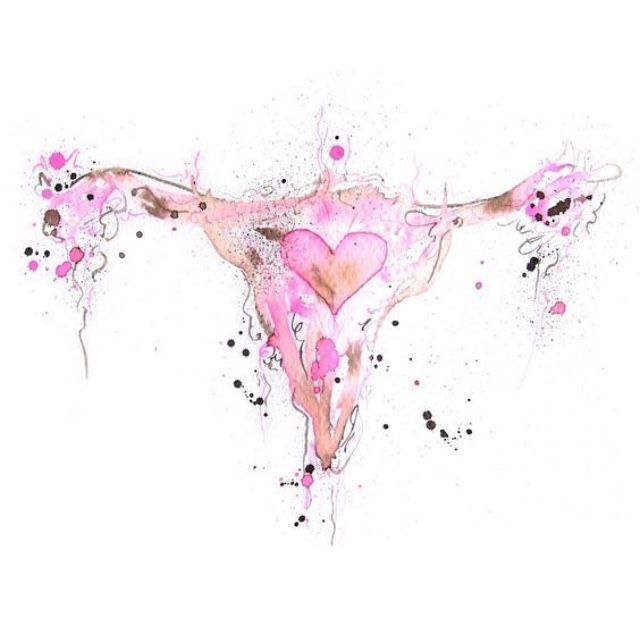
by Tanya Keam | Jun 4, 2018 | Acupuncture, Chinese medicine, Client information, Daily Rituals, DIY Wellness Tips, Fertility, fertility acupuncture, Food, Hormones, Menstrual cycle, Nambour, pregnancy, Sunshine coast, Wellness, Womens health
Chinese Medicine helps balance hormones with simple nutrition changes. Let’s look at the cultural differences first.
Many Western women treat their menstrual cycle as biological pre-determined:
* Painful or not
* Long or short
* Regular or irregular
* Clear skin or break outs
Many women stay on the contraceptive pill for 15+ years “for reasons such as clearer skin and fewer headaches”, when they haven’t had a proper period since they were teenagers. Remember the contraceptive pill only mimics a period, any bleeding that occurs is due to withdrawal of the pill. Thus, menstrual cycles and having a baby are treated like it’s all an act of fate, that their cycles will automatically regulate post pill – when the contraceptive pill actually turns off ovulation.
While in Eastern cultures, women believe that it is imperative that they take certain care to look after their cycles throughout their entire life.
What does this mean?
Firstly, there are genetic pre-dispositions that we all face with our health, but that doesn’t mean we have to go down the same path as our ancestors. I once heard a quote “Our genes load the gun, but our environment is what pulls this trigger”. In other words our daily life habits and individual environments are important to change these patterns to prevent illness and maintain wellness.
In the east, women live by a rule that it is very important to not eat cold foods during one’s period and to rest for a month after giving birth. Why so?
Chinese medicine helps balances hormones by looking at 4 concepts – hot, cold, excess and deficient. As an example, ‘excess’ means too much, while ‘deficient’ means too little. These concepts describe basic pathological states that are to be addressed in treating gynaecological health. An excess pattern can be seen as Endometrial fibroids inside the pelvic cavity (otherwise known as a blockage), while a deficient pattern can be seen as a very light or no period present at all. In relation to temperatures, the hot and cold nature of food is distinctive from the physical temperature of food, yet both states mutually reinforce each other.
Consuming cold foods during your cycle
Chinese medicine helps balance hormones by recommending to not consume cold foods just before or during the menstrual cycle. The reason is that ‘cold’ has the property of contracting and constricting, while ‘warmth’ is more moving and flowing. The key to healthy, manageable and pain free cycles is to maintain the proper flow of discharge of menstrual blood on a regular monthly basis. This includes the quality of the menstrual blood – not too dark and clotted or too little and light coloured.
Many women visit the clinic and say “My period is always quite painful and I feel like I can’t quite function for a couple of days but it’s just my normal”. Just because this is the way you have always felt in your cycle, does not mean it is okay or healthy. There are better ways so let’s keep reading …
Cold foods and bodily exposure to cold temperatures just before or during menstruation can cause painful cramps and in certain situations lead to ongoing gynaecological issues. Swimming on your period is a big NO NO in Chinese medicine – you guess it.. Cold! While you are menstruating, the cervix is more open, leading the cooler temperature of the water to lodge inside your pelvic cavity. The advancement of tampons made life a little easier for women, but if you can miss a swim on day 1-3 of your cycle, your health will thank you for it.
I have found that in my clinical practice that almost all of my patients with digestive complaints in one form or another have come to understand this basic understanding of temperatures and how Chinese medicine helps balance hormones this way. For these patients, physically cold foods such as salads or too many smoothies with ice and raw fruit, will exacerbate their digestive complaints and therefore upset the natural rhythms of their cycles. Even symptoms such as bloating can be resolved by reducing cold foods and drinking room temperature water.
Some women can object and say they can eat a very cold diet of raw vegetables, drink ice water and swim to their hearts content and have pain free, non-clotted, easy flowing periods! Yes, some women don’t seem to be as vulnerable as others, but that doesn’t validate the principles in general. These women may experience ‘contracting and constriction’ in other areas of their health, such as tension headaches, acne, breast tenderness, mood swings and pain elsewhere in the body.
To learn more about the specific nature of how food is determined cold, neutral or hot, or to learn more about how Chinese medicine help balances hormones with acupuncture and herbal medicine, then get in touch.You can contact me or you can now book online.
 Hi, I’m Tanya, an Acupuncturist and Chinese medicine practitioner in Nambour on the Sunshine Coast, Queensland Australia. I practice Chinese medicine because its safe, logical, relevant and has effectively shown methods of natural wellness for thousands of years (read more about my training here). Life doesn’t need to be complicated and nor does the treatment approaches to get people feeling vibrant and well. I’ve seen people gain a lot from treatments, much more than just alleviating symptoms. It’s exciting to connect with people and share deep wisdom from the classics of ancient and traditional medicine, with modern protocols for todays mind-body living. See you in the clinic !
Hi, I’m Tanya, an Acupuncturist and Chinese medicine practitioner in Nambour on the Sunshine Coast, Queensland Australia. I practice Chinese medicine because its safe, logical, relevant and has effectively shown methods of natural wellness for thousands of years (read more about my training here). Life doesn’t need to be complicated and nor does the treatment approaches to get people feeling vibrant and well. I’ve seen people gain a lot from treatments, much more than just alleviating symptoms. It’s exciting to connect with people and share deep wisdom from the classics of ancient and traditional medicine, with modern protocols for todays mind-body living. See you in the clinic !
Research:

by Tanya Keam | Nov 2, 2017 | Acupuncture, Anxiety, Body clock, Chinese medicine, Client information, Daily Rituals, DIY Wellness Tips, Immune system, Insomnia, Mental health, Nambour, Sleep, Stress
The impact of Insomnia on your health
Poor sleep leads to a host of concerns affecting both health and lifestyle. Such as:
- Mental health issues such as anxiety and depression
- Obesity and poor metabolism
- Heart disease
- Hypertension (high blood pressure) from the increased impact on cardiovascular health
- Lack of concentration
- Poor productivity
- Fatigue
- Low Immunity
How to manage insomnia with Chinese Medicine and natural remedies
In Traditional Chinese Medicine the 24 hour day is viewed in 2 hour blocks – such as 7-9am is when the energy of your stomach is the strongest (breakfast time!). 1-3am is liver time (when life is a bit stressful it impacts the liver so you’re awake thinking about the world’s problems at 2.30am).
If you are having trouble falling asleep, staying asleep, are restless, having unpleasant dreams or relying on sleeping tablets then consider some lifestyle adjustments listed below:
- Go to bed at the same time every night and before 10.30pm. Why? Our bodies have a sleep cycle every 90 minutes within a 24 hour day. Missing the window to fall asleep such as at 9.30pm, it is most likely that you will be awake until the next sleep cycle 90 minutes later.
- Avoid/reduce over-stimulating food such as hot peppers, alcohol, and coffee that overstimulate the nervous system causing an imbalance in the liver.
- Drink chrysanthemum tea – A light yellowish flower that has been used for thousands of years in Traditional Chinese Medicine for insomnia and liver health. Other sleepy time teas are also helpful – lavender, spearmint, hops and camomile.
- Get acupuncture to improve the quality of your sleep and general maintenance of your health and wellbeing. Acupuncture also puts our body back into the ‘rest and digest’ (parasympathetic state) where healing, proper rest and feelings of wellbeing reside. A 2016 study showed that “Acupuncture compared to sham/placebo and pharmacotherapy showed statistically significant results in a systematic review for sleep quality in people with insomnia, with further studies need to support the efficacy of acupuncture for sleep”.
- Herbal medicine prescribed by a registered practitioner. Herbs can be very powerful sleep aids that don’t tend to have the same issues with side effects as more conventional pharmaceuticals.
- Remove electronics from your room, as well as turning off bright lights such as the blue light on your phone/ipad 1 hour before bed.
- Do regular exercise, both high intensity and low impact. Preferably in the morning as afternoon evening exercise can keep you awake from all of the endorphins flowing. Sunshine in your eyes also activates Melatonin (a hormone that regulates sleep and wakefulness).
- Try a mediation and/or yoga class to bring awareness to your self. Both are fantastic for clearing your head and breathing into your abdomen – it will help bring your attention away from anxious thoughts. Both are considered “a practice”, meaning you make them a regular part of your life.
- Avoid icy cold drinks. According to Traditional Chinese Medicine your body has to work extra hard to heat up the icy cold water you are drinking, which is also over-stimulating your body to cause you to stay awake.
- Walk around barefoot will naturally get you feeling grounded and reconnects you with yourself. In Chinese Medicine, massaging the meridian points on the feet are correlated with sleep.
- Write down your thoughts/to-do lists before bed or earlier on in the day so that if you do wake up during the night, your mind doesn’t automatically start thinking about all the things that need doing the next day, week, month.
- Clean your sleep environment – declutter, dust and dirt removal, clean bed linen regularly and don’t sleep with your pets. Cats are known for running around the house at 2am!
- Manage other health concerns – sleep disturbances due to pain, itching, asthma or other breathing disturbances are not considered true insomnia. These issues must be treated to allow a restful night’s sleep.
 Hi, I’m Tanya, an Acupuncturist and Chinese Medicine practitioner in Nambour on the Sunshine Coast, Queensland Australia. I practice Chinese medicine because its safe, logical, relevant and has effectively shown methods of natural wellness for thousands of years (read more about my training here). Life doesn’t need to be complicated and nor does the treatment approaches to get people feeling vibrant and well. I’ve seen people gain a lot from treatments, much more than just alleviating symptoms. It’s exciting to connect with people and share deep wisdom from the classics of ancient and traditional medicine, with modern protocols for todays mind-body living. See you in the clinic !
Hi, I’m Tanya, an Acupuncturist and Chinese Medicine practitioner in Nambour on the Sunshine Coast, Queensland Australia. I practice Chinese medicine because its safe, logical, relevant and has effectively shown methods of natural wellness for thousands of years (read more about my training here). Life doesn’t need to be complicated and nor does the treatment approaches to get people feeling vibrant and well. I’ve seen people gain a lot from treatments, much more than just alleviating symptoms. It’s exciting to connect with people and share deep wisdom from the classics of ancient and traditional medicine, with modern protocols for todays mind-body living. See you in the clinic !
For more information about how I can assist your health and manage insomnia with Chinese medicine, you can contact me or you can now book online.
Research:
- JL Shergis, X Ni, M L.Jackson et al. A systematic review of acupuncture for sleep quality in people with insomnia, Complementary Therapies in Medicine, Vol 26, June 2016, p 11.20.
- Gao, Xiyan, Cuixiang Xu, Peiyu Wang, Shan Ren, Yanli Zhou, Xuguang Yang, and Ling Gao. “Curative effect of acupuncture and moxibustion on insomnia: a randomized clinical trial.” Journal of Traditional Chinese Medicine 33, no. 4 (2013): 428-432.

by Tanya Keam | Apr 19, 2017 | Acupuncture, Authentic self, Chinese medicine, Client information, Daily Rituals, DIY Wellness Tips, Emotions, Exercise, Exercise routine, Fitness, Holidays, Joint pain, Mental health, Motivation, Muscle pain, Nambour, Nature, Nourishing, Rehabilitation, Stress, Sunshine coast, Travel, Wellness
How many types of exercises can you list? Tonnes right?
Walking, jogging, weight training, pilates, swimming, yoga, boxing, martial arts, trekking, tennis, snowboarding, gymnastics, basketball, crossfit.. the list goes on!
Who else gets bored at the gym? Have you ever wanted to try a new type of exercise or are you sick of the same environment where you have been exercising? it can lead to lack of motivation for sure!
My general fitness routine consists on swimming, running, yoga and a bit of resistance training. Yet with these 4 I was bored and felt unmotivated to get out there. So, I decided to change things up. I’ve been to the Himalayan Mountains and one trek was a 10km return at 2,828 meters, so looking more close to home I recently climbed a mountain in the Glasshouse Mountains that I hadn’t already climbed. The mighty Mount Beerwah at 556 meters (1,824 ft), the highest of the 10 volcanic plugs in the region, and more like 2 hours, not 10! It had recently re-opened in January 2017 after being closed and doesn’t cost anything – bonus!
The climb wasn’t about how many laps I could swim or what my pace was in running, it was about trying something new, getting outside in the sunshine and fresh air, but most importantly to challenge myself as it’s a steep climb. Oh and don’t let age define what you can and cannot do. I passed a 70 year old couple on the mountain, taking it slow but doing it! I must advise, if you are new to mountain climbing or bush walking then start with a smaller mountain like Ngun Ngun or Mount Coolum that are very popular to climb on the Sunshine Coast.
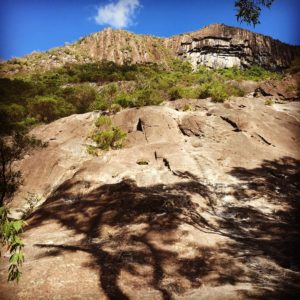 What did I get out of the climb? First of all, 2 hours of fresh Autumn crisp air, sunshine sunshine sunshine, elements of conquering fear when I thought I couldn’t climb any further as my legs were jelly and the top seemed so far away. I also had such a clear head space – I wasn’t thinking about last week or tomorrow, I was right there trying to find the next step to go higher while breathing heavily. Reaching the summit was tough but I did it and felt stoked with my achievement. Coming down was quicker and lots of sliding. Thank god I had good trekking shoes on to grip the rock face, and I was wearing gloves to protect my hands! At the bottom, I ended up with ripped pants and a few cuts but god did I feel on top of the world! I conquered the mother of mountains but also myself !
What did I get out of the climb? First of all, 2 hours of fresh Autumn crisp air, sunshine sunshine sunshine, elements of conquering fear when I thought I couldn’t climb any further as my legs were jelly and the top seemed so far away. I also had such a clear head space – I wasn’t thinking about last week or tomorrow, I was right there trying to find the next step to go higher while breathing heavily. Reaching the summit was tough but I did it and felt stoked with my achievement. Coming down was quicker and lots of sliding. Thank god I had good trekking shoes on to grip the rock face, and I was wearing gloves to protect my hands! At the bottom, I ended up with ripped pants and a few cuts but god did I feel on top of the world! I conquered the mother of mountains but also myself !
Soaking in an epsom salt bath that night as I knew I would be sore from using VERY different muscles that I had been using, all I could think of was what I could do next to add to my fitness regime and to challenge myself. What did I do? I looked for a bigger mountain – Mount Warning at 1,156 meters! Then I started planning my next break to go snowboarding. Why? Because I haven’t done it and life is about experiences!
So if you are feeling unmotivated with doing fitness and then feel guilty for not doing it, try something new, especially something outdoors. Mountain climbing, a game of tennis, join a team sport or a outdoor bootcamp. Just try it. Trust me, you will love it!
TK xx
Tanya Keam Wellness is an experienced health clinic in Nambour on the Sunshine Coast. Helping you to feel better in all aspects of your health and wellbeing.
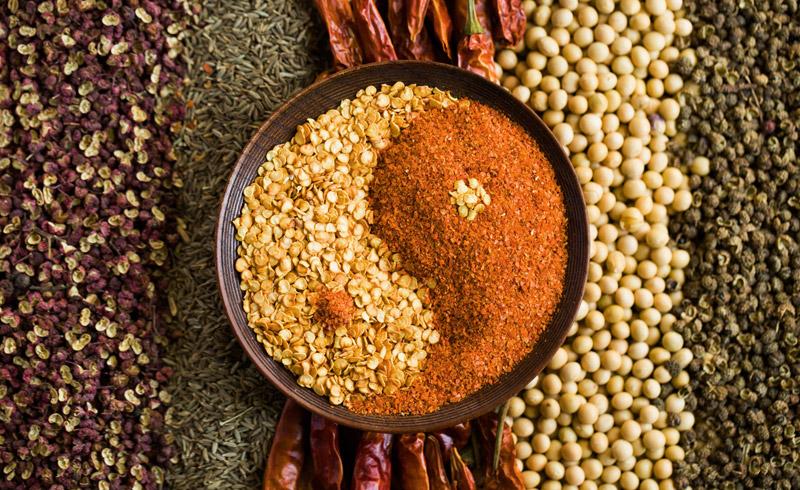
by Tanya Keam | Mar 22, 2017 | Acupuncture, Chinese medicine, Client information, Daily Rituals, Deficiency, DIY Wellness Tips, Emotions, Fertility, fertility acupuncture, Food, Herbal remedies, Hormones, Menstrual cycle, Mental health, Nambour, Nourishing, Nutrition, pregnancy, Stress, Sunshine coast, Wellness, Womens health, Yin
Have you heard of Yin and Yang?
In Chinese philosophy, yin and yang describe how seemingly opposite or contrary forces may actually be complementary, interconnected, and interdependent in the natural world, and how they may give rise to each other as they interrelate to one another. Many tangible dualities (such as light and dark, fire and water, expanding and contracting) are thought of as physical manifestations of the duality symbolized by yin and yang.
Yin qualities include:
Darkness, moon, feminine, shade, quiet, inward
Yang qualities include:
Light, sun, masculine, brightness, loud, outward
Example include:
Night (yin) and day (yang)
Yoga exercise (yin) and boxing exercise (yang)
Yin represents the energy that is responsible for moistening and cooling bodily functions. When this energy is depleted your body begins to show signs of “heating up”. This is not a true heat such as a fever, but rather a lack of the moistening and cooling functions that are necessary to maintain a healthy balance.
Women are more yin, while men are more yang – for example yin is all of the fluids in the body for women (breast milk, menstruation, vaginal discharge/lubricant) – men don’t have this. Men do have some yin qualities, as well as women having some yang qualities.
This post is focused on yin foods, thus nourishing the body and rebalancing conditions. These can include dry skin, menopausal hot flushes, tendon and ligament tightness or flaccidity, vaginal dryness, lack of breast milk production, low libido, insomnia, feeling low, scanty menstruation, hot hands and feet, constipation, dull headaches or anxiety.
Why is your yin imbalanced? Well, lots of reasons – genetics, age, stress on the body, trauma, blood loss, excess sexual activity, recreational drug use, too many yang hot foods, poor diet and lifestyle to name a few.
Nutrition is a simple way to balance yin and yang. Yin foods are cool and expanding; Yang foods are warm and contracting. Think of a shell of iceberg lettuce (Yin), and now a chunk of beef steak (Yang), and you will instantly recognise this meaning.
Foods to nourish Yin include:
- Grains: barley, millet
- Vegetables: alfalfa sprout, artichoke, asparagus, kelp, mung bean sprout, pea, potato,seaweed,string bean, sweet potato, tomato, water chestnut, yam, zucchini
- Fruit: apple, apricot, avocado, banana, lemon, lime, mango, mulberry, pear, persimmon, pineapple, pomegranate, watermelon
- Beans: adzuki, black beans, black soya, kidney, lima, mung
- Bean Products: tofu
- Nuts and seeds: coconut milk, sesame seed, black sesame seed, walnut
- Fish: fish in general but especially clam, fresh water clam, crab, cuttlefish, oyster, octopus, sardine
- Meat: beef, duck, goose, pork, pork kidney, rabbit
- Dairy: cheese, chicken egg, cow’s milk, duck egg
- Herbs and spices: marjoram, nettle
- Oils and condiments: honey, malt,
Common supplements: Ginseng, royal jelly
Examples of every day foods that can be used to build yin, include:
- Fruit smoothies with honey and banana or a fruit salad
- Fish dishes with coconut milk
- Omelettes with cheese
- Asparagus and egg salads with sesame seeds
- Tacos made with Kidney beans and topped with a small amount of cheese
- Baked Potato stuffed with tofu with soya sauce and sesame seeds.
- Pork and apple dishes
- Miso soup with tofu and seaweed
Foods to avoid:
- Stimulating foods such as the following will only further deplete yin: caffeine, alcohol, sugar and strongly heating, pungent spices.
Note: Like yin tonifying herbs, yin building foods have a tendency to congest the digestive organs and promote stagnation if large amounts are consumed. It is therefore important to consume small quantities frequently rather than large helpings irregularly. Such as a large portion if a fish coconut curry late at night is not ideal as it will sit in your stomach, stagnate and not digest properly before bed. Thus a small portion between 5-6pm is more ideal as there is more time before you go to bed to digest it.
Also, It’s not to say that yang foods you already consume such as roast chicken, other types of fish, coffee, tea, black pepper etc are to be completely avoided. Remember yin and yang balance each other out, are contrary forces that are actually complementary, interconnected, and interdependent of each other.
Other yin tips: meditate; eat more fresh fruit and salads; drink more water, teas and juices; wear pastel colors; wear loose, flowing clothes; stretch; get out into nature; listen to relaxing music; light candles at night.
Take care of you, see you in the clinic,
TK xx
Tanya Keam Wellness is an experienced health clinic in Nambour on the Sunshine Coast. Helping you to feel better in all aspects of your health and wellbeing.
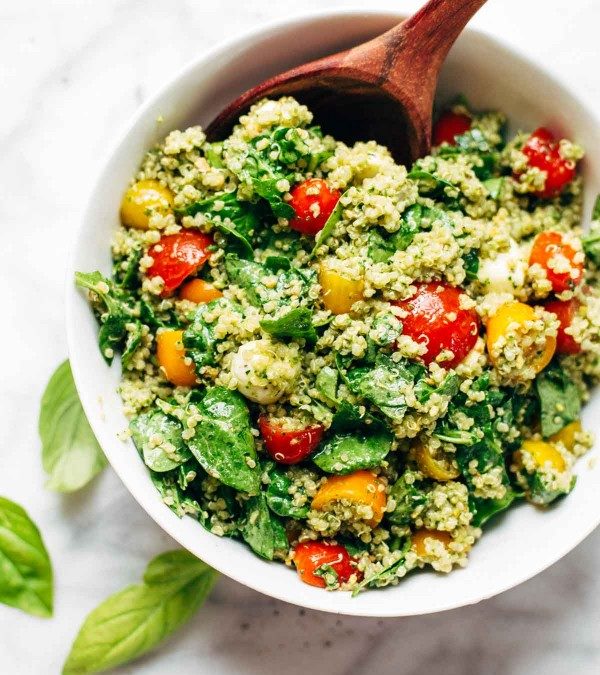
by Tanya Keam | Nov 30, 2016 | Acupuncture, Chinese medicine, fertility acupuncture, Homemade, Nambour, Nourishing, Nutrition, Recipes, Seasonal living, Sunshine coast, Vegetarian, Wellness
- 2 cups cooked quinoa (cooked with your choice of broth)
- 2 cups halved cherry tomatoes
- 2 cups spinach leaves
- ½ cup (or more, to taste) avocado coriander dressing
- Haloumi cheese (grilled) or Mozarrella, cut into bite sized pieces
- a few handfuls of crushed almonds or other nuts
- grilled veggies like asparagus or zucchini
- grilled chicken or another protein such as tofu
- half an avocado
- ¼ cup Greek yogurt
- ½ cup water (more as needed to adjust consistency)
- 1 cup coriander leaves and stems
- 1 small clove of garlic
- ½ teaspoon salt
- a squeeze of lime juice
Put together all ingredients in a bowl, chill dressing separately until ready to serve.
An easy and healthy meal to prepare for Summer gatherings.
Eat well, take care of you, see you in the clinic,
TK xx
Tanya Keam Wellness is an experienced health clinic in Nambour on the Sunshine Coast. Helping you to feel better in all aspects of your health and wellbeing.
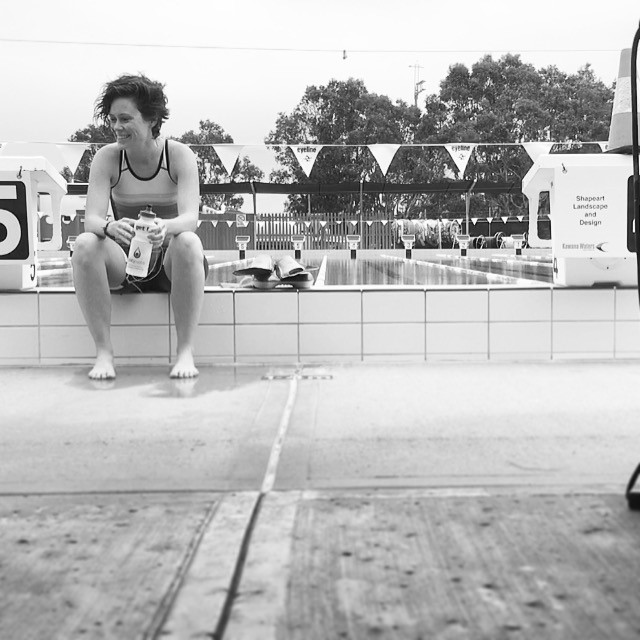
by Tanya Keam | Oct 24, 2016 | Acupuncture, Chinese medicine, Client information, Daily Rituals, DIY Wellness Tips, Exercise, Fitness, Immune Support, Liver Health, Mental health, Nambour, Nature, Nutrition, Seasonal living, Spring, Stress, Sunshine coast, Wellness
We live in one of the most fittest and healthiest places in Australia. We often have triathlon events, surfers at Noosa, runners on Alex hill, mountain climbers on Ngun Ngun, dog walking at Kawana and health cafes popping up everywhere. Who wants to stay inside on a sunny weekend? NO ONE!
Spring is the season of regeneration and growth and connects to the liver organ. The days become longer and we want to spend more time outside, especially living on the beautiful Sunshine Coast!
Here are some tips and strategies fitness wise and to support liver health:
From a Western medicine perspective, the liver is a very important organ that stores blood, produces bile, processes toxins and aids in our immune function.
From a Chinese medicine perspective, it also has a major influence on the smooth flow of energy (life force) to move throughout our bodies. When something blocks this energy flow such as lack of exercise, stress, pent up emotions or an unhealthy lifestyle; the liver becomes agitated/blocked/stuck, which can lead to symptoms such as irritability, insomnia, PMS, tight muscles, mood swings, digestive discomfort, pain in the body and headaches.
So what can you do to your liver energy/life force to flow smoothly in the face of every day activities?
Exercise: The best way to get your energy moving is to move! Different types of exercise suit different people. Some people do really well with vigorous exercise such as long runs or high intensity interval training (HIIT), while other people are more suited to slower, gentle forms of movement such as walking or yoga. I have personally found a mix of both types of exercise to be beneficial. If the gym is a bore, then find something you enjoy, it might even be a group fitness class where you can meet new people. This spring I’m into swimming, yoga, running and resistance exercises. Get those endorphins flowing !!!!
Diet: It is important to eat foods that will cleanse and improve overall liver function. Sour flavours belong to the liver/gallbladder function. Having a squeeze of lemon in warm water first thing in the morning invigorates the liver to get moving for the day and vinaigrette dressings can be added to salads. Leafy greens such as kale, lettuce, spinach and chard support liver detoxification pathways. Artichokes contain a flavonoid which is a strong antioxidant – meaning prevention and cleansing of free radical damage to cells. Try to reduce the amount of dairy, alcohol, greasy and deep fried foods, and excessive salt.
Manage stress – Stress plays a part in all of our lives, and a small amount is healthy, but its just how we manage it all that counts. Dealing with issues, conflict in relationships, pent up emotions, work situations etc. Seek professional support if needed but otherwise have a ‘self care’ approach to your day to day lives. Rest when you need to, have health treatments such as acupuncture or massage, exercise, take moments to be in nature and soak up some vitamin D, express how you feel, plan your day and week ahead.
It’s the little things that count. See you in the pool!
Take care,
TK x
Tanya Keam Wellness is an experienced health clinic in Nambour on the Sunshine Coast. Helping you to feel better in all aspects of your health and wellbeing.
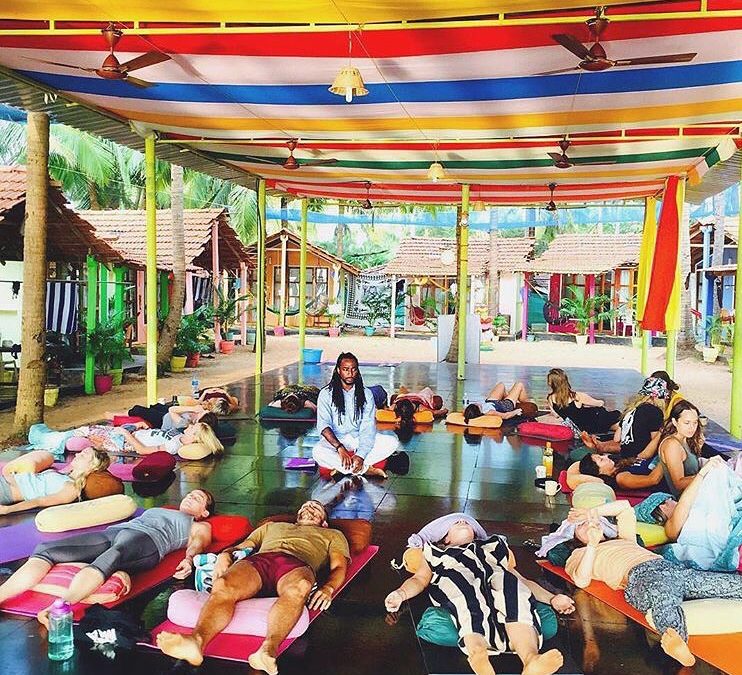
by Tanya Keam | Sep 12, 2016 | Authentic self, Client information, Daily Rituals, DIY Wellness Tips, Emotions, Exercise, Mental health, Muscle pain, Nambour, Rehabilitation, Sleep, Spiritual growth, Stress, Wellness, Yoga
Why I recommend Yoga
I was lucky enough to spend time in India doing my yoga teacher training with people from all walks of life. Yoga includes breath control, simple meditation, and the adoption of specific bodily postures, for health and relaxation.
Yoga can improve all areas of you health and wellbeing
Yoga is simply about connecting with yourself through mindful exercise, using breath. Just because you cant touch your toes or get yourself into bizarre postures that yoga pictures are known for, doesn’t mean the practice of yoga cannott improve your life. Start with a simple beginner class once a week to learn some simple postures and breathing techniques and then go from there!
You can benefit from:
Well rested sleep
Increased circulation
Better flexibility
Better posture
Improved balance
More strength
A toned body
More energy
Head clarity
Relaxation and peace
Pregnancy discomfort and birth preparation
Better sex
Lower blood pressure
Increased lymph flow
Increased metabolism
Better digestion
Reduced pain
Improvement for other sports
Better respiration
Reduced stress and anxiety
An inner calmness
Improve your outlook on life
A better connection with yourself – physically, mentally, emotionally, spiritually
There are MANY styles of yoga classes all over the Sunshine Coast – just try a few and see which teacher and class best suits you.
Take care of you, see you in the clinic,
TK xx
Tanya Keam Wellness is an experienced health clinic on the Sunshine Coast. Helping you to feel better in all aspects of your health and wellbeing.

 Hi, I’m Tanya, an Acupuncturist and health practitioner in Nambour on the Sunshine Coast, Queensland Australia. I practice Chinese medicine because its safe, logical, relevant and has effectively shown methods of natural wellness for thousands of years (read more about my training here). Life doesn’t need to be complicated and nor does the treatment approaches to get people feeling vibrant and well. I’ve seen people gain a lot from treatments, much more than just alleviating symptoms. It’s exciting to connect with people and share deep wisdom from the classics of ancient and traditional medicine, with modern protocols for todays mind-body living. See you in the clinic !
Hi, I’m Tanya, an Acupuncturist and health practitioner in Nambour on the Sunshine Coast, Queensland Australia. I practice Chinese medicine because its safe, logical, relevant and has effectively shown methods of natural wellness for thousands of years (read more about my training here). Life doesn’t need to be complicated and nor does the treatment approaches to get people feeling vibrant and well. I’ve seen people gain a lot from treatments, much more than just alleviating symptoms. It’s exciting to connect with people and share deep wisdom from the classics of ancient and traditional medicine, with modern protocols for todays mind-body living. See you in the clinic ! 










